Attractions · Europe · Featured · Going Out · Regions · Spain · Western Europe
Discover the authentic Iberia through UNESCO World Heritage Sites
Spain is part of an elite club; one of the top 3 countries on the planet with the most UNESCO World Heritage Sites. It is a remarkable reflection of the country’s rich historical, cultural and natural landscape.
Some of Spain’s World Heritage recognitions are world-famous, like Granada’s extraordinary Alhambra, its beautiful Generalife gardens, and the ancient city of Albaysin; or the unique creativity of the architecture and design of Antoni Gaudi.
Yet many remain fairly unknown, ready for the inquisitive traveller. Here I cast the spotlight on 5 favourite World Heritage Sites that are well worth adding to your travel bucket list when next visiting Spain.
Antequera Dolmens Archaeological Site
Discover breath-taking megalithic architecture, set amongst some of the finest scenery in Southern Spain.
Andalucia is a favourite destination. Beyond the beaches and resorts, Southern Spain boasts some of Europe’s most striking historical cities, like Seville and Granada. Yet have you heard of Antequera? Until a few years ago I am sure you hadn’t, but this picturesque city, at the crossroads of historical Andalucia, in the heart of Southern Spain, has emerged as the must-visit city. There’s the authentic charm of the town, its medieval and baroque architecture, tasty traditional cuisine, and superb hiking and climbing opportunities in the surrounding countryside. Yet there’s also another draw – the UNESCO recognised Antequera Dolmens Archaeological Site.
 Outside the city is an impressive megalithic complex, dating back from 6,500 years! The setting is beautiful. The ancient tombs and structures made from huge pieces of rock, face out towards the nearby natural sites including the remarkable limestone formations at El Torcal, and the distinctive mountain ‘Peña de los Enamorados.
Caliphate City of Medina Azahara
Walk amongst the arches and columns of one of the most remarkable cities with this ancient Western Islamic civilisation.
Whilst staying in sunny southern Spain, it’s essential to visit Cordoba. This unspoilt city actually as the most UNESCO recognitions of any other city in Spain. These include the amazing Mosque-Cathedral; the Fiesta de los Patios (when the city’s flowering courtyards are opened to the public); the historical old town; and most recently, Medina Azahara.
Outside the city is an impressive megalithic complex, dating back from 6,500 years! The setting is beautiful. The ancient tombs and structures made from huge pieces of rock, face out towards the nearby natural sites including the remarkable limestone formations at El Torcal, and the distinctive mountain ‘Peña de los Enamorados.
Caliphate City of Medina Azahara
Walk amongst the arches and columns of one of the most remarkable cities with this ancient Western Islamic civilisation.
Whilst staying in sunny southern Spain, it’s essential to visit Cordoba. This unspoilt city actually as the most UNESCO recognitions of any other city in Spain. These include the amazing Mosque-Cathedral; the Fiesta de los Patios (when the city’s flowering courtyards are opened to the public); the historical old town; and most recently, Medina Azahara.
 Found a few minutes’ drive outside the city, this mid-10th century city was lost, left hidden for 1000 years. Only discovered in the early 20th century, this was the epicentre of the Umayyad dynasty, the seat of the Caliphate of Cordoba. Medina Azahara was never redeveloped; so it is now a perfect example of an Al-Andaluz city. As you walk amongst decorative arches and city walls you can imagine the bustling energy of this once sophisticated metropolis.
Royal Monastery of Santa Maria de Guadalupe
Enjoy the tranquillity and artistic splendour of one of Spain’s most memorable monasteries.
Mexico City is said to be home to the most visited Catholic pilgrimage site in the world – the Basilica of our Lady of Guadalupe. Well, the story of this most popular religious icon actually can be traced right back to the delightful town of Guadalupe, Spain. This is admittedly a fairly undiscovered part of Spain, and for that, a very special place. The nearby regional capital of Caceres is also a UNESCO city, with a spectacular medieval walled old town, and some of the best dining in Spain.
Found a few minutes’ drive outside the city, this mid-10th century city was lost, left hidden for 1000 years. Only discovered in the early 20th century, this was the epicentre of the Umayyad dynasty, the seat of the Caliphate of Cordoba. Medina Azahara was never redeveloped; so it is now a perfect example of an Al-Andaluz city. As you walk amongst decorative arches and city walls you can imagine the bustling energy of this once sophisticated metropolis.
Royal Monastery of Santa Maria de Guadalupe
Enjoy the tranquillity and artistic splendour of one of Spain’s most memorable monasteries.
Mexico City is said to be home to the most visited Catholic pilgrimage site in the world – the Basilica of our Lady of Guadalupe. Well, the story of this most popular religious icon actually can be traced right back to the delightful town of Guadalupe, Spain. This is admittedly a fairly undiscovered part of Spain, and for that, a very special place. The nearby regional capital of Caceres is also a UNESCO city, with a spectacular medieval walled old town, and some of the best dining in Spain.
 The Royal Monastery of Santa Maria de Guadalupe started as a humble sanctuary, deep in the countryside, but thanks to royal patronage it became a major monastery. Today, visitors can walk amongst its beautifully decorated chapels, and enjoy the gardens and cloisters. This is where it is said that the Spanish monarchs Isabel & Ferdinand signed papers confirming the first voyage to Christopher Columbus. The rest, as they say, is history.
Las Médulas Cultural Landscape
Be awed by an otherworldly landscape unique in the world.
Northwest Spain is renowned for its Camino de Santiago hiking way, also recognised by UNESCO. This renowned route has truly put the north of Spain on the map; introducing international visitors to the cultural and culinary attractions of this wonderful part of the peninsula. Las Médulas is something quite unique – a landscape that looks like it’s from another planet. Otherworldly red rock formations tower above the verdant countryside. These unusual towers of rock filled with caves are not a natural phenomenon.
The Royal Monastery of Santa Maria de Guadalupe started as a humble sanctuary, deep in the countryside, but thanks to royal patronage it became a major monastery. Today, visitors can walk amongst its beautifully decorated chapels, and enjoy the gardens and cloisters. This is where it is said that the Spanish monarchs Isabel & Ferdinand signed papers confirming the first voyage to Christopher Columbus. The rest, as they say, is history.
Las Médulas Cultural Landscape
Be awed by an otherworldly landscape unique in the world.
Northwest Spain is renowned for its Camino de Santiago hiking way, also recognised by UNESCO. This renowned route has truly put the north of Spain on the map; introducing international visitors to the cultural and culinary attractions of this wonderful part of the peninsula. Las Médulas is something quite unique – a landscape that looks like it’s from another planet. Otherworldly red rock formations tower above the verdant countryside. These unusual towers of rock filled with caves are not a natural phenomenon.
 In fact, these are the results of searching for gold, by ingenious Roman engineers, who used state-of-the-art hydraulic mining. Vast amounts of water were used to literally destroy the mountains to expose the ore. The resulting devastation is today a wonderous sight, a place quite unique in Spain; a stunning place to hike and explore.
Teide National Park
Be amazed by one the world’s greatest volcanoes.
Do you know which is the highest Spanish peak? The truth is that its actually not on the Spanish peninsula; it’s the 3718 metre Mount Teide, on the Canary island of Tenerife. The Canary Islands are a sun-kissed Atlantic volcanic archipelago off north-western Africa and declared part of Spain since the early 19th century.
In fact, these are the results of searching for gold, by ingenious Roman engineers, who used state-of-the-art hydraulic mining. Vast amounts of water were used to literally destroy the mountains to expose the ore. The resulting devastation is today a wonderous sight, a place quite unique in Spain; a stunning place to hike and explore.
Teide National Park
Be amazed by one the world’s greatest volcanoes.
Do you know which is the highest Spanish peak? The truth is that its actually not on the Spanish peninsula; it’s the 3718 metre Mount Teide, on the Canary island of Tenerife. The Canary Islands are a sun-kissed Atlantic volcanic archipelago off north-western Africa and declared part of Spain since the early 19th century.
 The seven main populated islands of the Canaries are now very much part of mainstream tourism, renowned for their ‘eternal spring’ climate, fabulous beaches and popular hotels. Tenerife is the largest and most populated island, yet also boasts spectacular areas of natural beauty and tranquillity. The Teide National Park is in the centre of the island, an area of lava flows, craters and Mount Teide. This is the highest point of all the Atlantic islands (and the highest peak on Spanish soil).
This, the oldest national park in Spain, is a delight and wonder to visit. Unusual flowers and plants flourish in the mineral rich soil, together with forests of pine and cedar. It’s a great area for hiking; or you can enjoy 4×4 tours; and even a cable car ride up to 3,555 metres!
Once you visited these 5 amazing UNESCO sites, it’s good to know you have at least another 43 in Spain to enjoy!
Paola Fiocchi Van den Brande is Director of Passepartout Homes Ltd. Passepartout Homes Ltd. offers an exclusive portfolio of luxury villa rentals in Italy, France, Greece, Croatia, Thailand and worldwide.
If you would like to be a guest blogger on A Luxury Travel Blog in order to raise your profile, please contact us.
The seven main populated islands of the Canaries are now very much part of mainstream tourism, renowned for their ‘eternal spring’ climate, fabulous beaches and popular hotels. Tenerife is the largest and most populated island, yet also boasts spectacular areas of natural beauty and tranquillity. The Teide National Park is in the centre of the island, an area of lava flows, craters and Mount Teide. This is the highest point of all the Atlantic islands (and the highest peak on Spanish soil).
This, the oldest national park in Spain, is a delight and wonder to visit. Unusual flowers and plants flourish in the mineral rich soil, together with forests of pine and cedar. It’s a great area for hiking; or you can enjoy 4×4 tours; and even a cable car ride up to 3,555 metres!
Once you visited these 5 amazing UNESCO sites, it’s good to know you have at least another 43 in Spain to enjoy!
Paola Fiocchi Van den Brande is Director of Passepartout Homes Ltd. Passepartout Homes Ltd. offers an exclusive portfolio of luxury villa rentals in Italy, France, Greece, Croatia, Thailand and worldwide.
If you would like to be a guest blogger on A Luxury Travel Blog in order to raise your profile, please contact us.
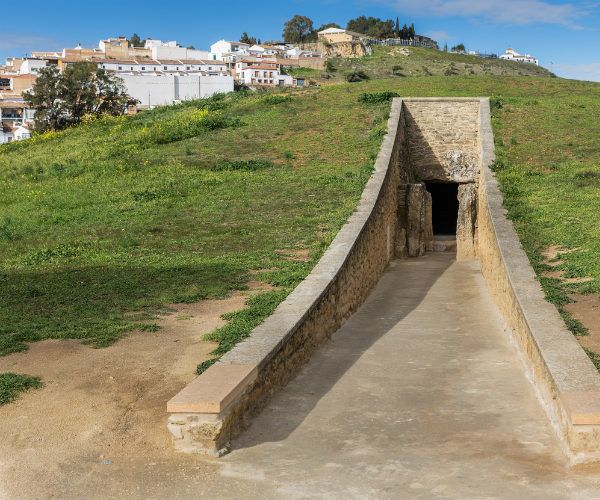 Outside the city is an impressive megalithic complex, dating back from 6,500 years! The setting is beautiful. The ancient tombs and structures made from huge pieces of rock, face out towards the nearby natural sites including the remarkable limestone formations at El Torcal, and the distinctive mountain ‘Peña de los Enamorados.
Caliphate City of Medina Azahara
Walk amongst the arches and columns of one of the most remarkable cities with this ancient Western Islamic civilisation.
Whilst staying in sunny southern Spain, it’s essential to visit Cordoba. This unspoilt city actually as the most UNESCO recognitions of any other city in Spain. These include the amazing Mosque-Cathedral; the Fiesta de los Patios (when the city’s flowering courtyards are opened to the public); the historical old town; and most recently, Medina Azahara.
Outside the city is an impressive megalithic complex, dating back from 6,500 years! The setting is beautiful. The ancient tombs and structures made from huge pieces of rock, face out towards the nearby natural sites including the remarkable limestone formations at El Torcal, and the distinctive mountain ‘Peña de los Enamorados.
Caliphate City of Medina Azahara
Walk amongst the arches and columns of one of the most remarkable cities with this ancient Western Islamic civilisation.
Whilst staying in sunny southern Spain, it’s essential to visit Cordoba. This unspoilt city actually as the most UNESCO recognitions of any other city in Spain. These include the amazing Mosque-Cathedral; the Fiesta de los Patios (when the city’s flowering courtyards are opened to the public); the historical old town; and most recently, Medina Azahara.
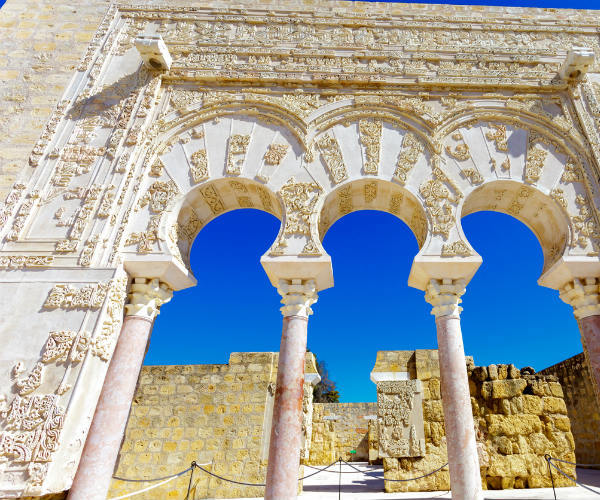 Found a few minutes’ drive outside the city, this mid-10th century city was lost, left hidden for 1000 years. Only discovered in the early 20th century, this was the epicentre of the Umayyad dynasty, the seat of the Caliphate of Cordoba. Medina Azahara was never redeveloped; so it is now a perfect example of an Al-Andaluz city. As you walk amongst decorative arches and city walls you can imagine the bustling energy of this once sophisticated metropolis.
Royal Monastery of Santa Maria de Guadalupe
Enjoy the tranquillity and artistic splendour of one of Spain’s most memorable monasteries.
Mexico City is said to be home to the most visited Catholic pilgrimage site in the world – the Basilica of our Lady of Guadalupe. Well, the story of this most popular religious icon actually can be traced right back to the delightful town of Guadalupe, Spain. This is admittedly a fairly undiscovered part of Spain, and for that, a very special place. The nearby regional capital of Caceres is also a UNESCO city, with a spectacular medieval walled old town, and some of the best dining in Spain.
Found a few minutes’ drive outside the city, this mid-10th century city was lost, left hidden for 1000 years. Only discovered in the early 20th century, this was the epicentre of the Umayyad dynasty, the seat of the Caliphate of Cordoba. Medina Azahara was never redeveloped; so it is now a perfect example of an Al-Andaluz city. As you walk amongst decorative arches and city walls you can imagine the bustling energy of this once sophisticated metropolis.
Royal Monastery of Santa Maria de Guadalupe
Enjoy the tranquillity and artistic splendour of one of Spain’s most memorable monasteries.
Mexico City is said to be home to the most visited Catholic pilgrimage site in the world – the Basilica of our Lady of Guadalupe. Well, the story of this most popular religious icon actually can be traced right back to the delightful town of Guadalupe, Spain. This is admittedly a fairly undiscovered part of Spain, and for that, a very special place. The nearby regional capital of Caceres is also a UNESCO city, with a spectacular medieval walled old town, and some of the best dining in Spain.
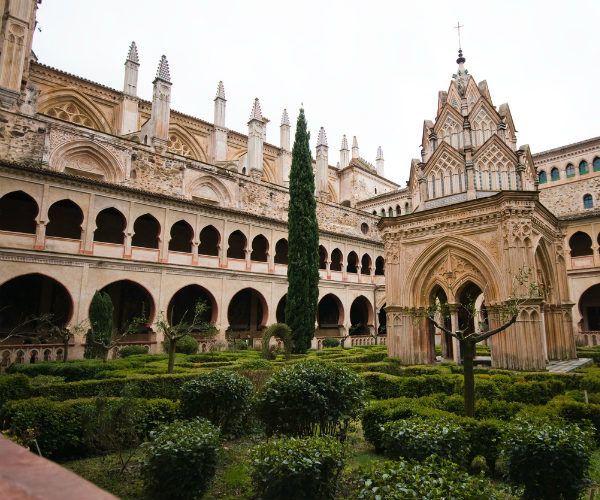 The Royal Monastery of Santa Maria de Guadalupe started as a humble sanctuary, deep in the countryside, but thanks to royal patronage it became a major monastery. Today, visitors can walk amongst its beautifully decorated chapels, and enjoy the gardens and cloisters. This is where it is said that the Spanish monarchs Isabel & Ferdinand signed papers confirming the first voyage to Christopher Columbus. The rest, as they say, is history.
Las Médulas Cultural Landscape
Be awed by an otherworldly landscape unique in the world.
Northwest Spain is renowned for its Camino de Santiago hiking way, also recognised by UNESCO. This renowned route has truly put the north of Spain on the map; introducing international visitors to the cultural and culinary attractions of this wonderful part of the peninsula. Las Médulas is something quite unique – a landscape that looks like it’s from another planet. Otherworldly red rock formations tower above the verdant countryside. These unusual towers of rock filled with caves are not a natural phenomenon.
The Royal Monastery of Santa Maria de Guadalupe started as a humble sanctuary, deep in the countryside, but thanks to royal patronage it became a major monastery. Today, visitors can walk amongst its beautifully decorated chapels, and enjoy the gardens and cloisters. This is where it is said that the Spanish monarchs Isabel & Ferdinand signed papers confirming the first voyage to Christopher Columbus. The rest, as they say, is history.
Las Médulas Cultural Landscape
Be awed by an otherworldly landscape unique in the world.
Northwest Spain is renowned for its Camino de Santiago hiking way, also recognised by UNESCO. This renowned route has truly put the north of Spain on the map; introducing international visitors to the cultural and culinary attractions of this wonderful part of the peninsula. Las Médulas is something quite unique – a landscape that looks like it’s from another planet. Otherworldly red rock formations tower above the verdant countryside. These unusual towers of rock filled with caves are not a natural phenomenon.
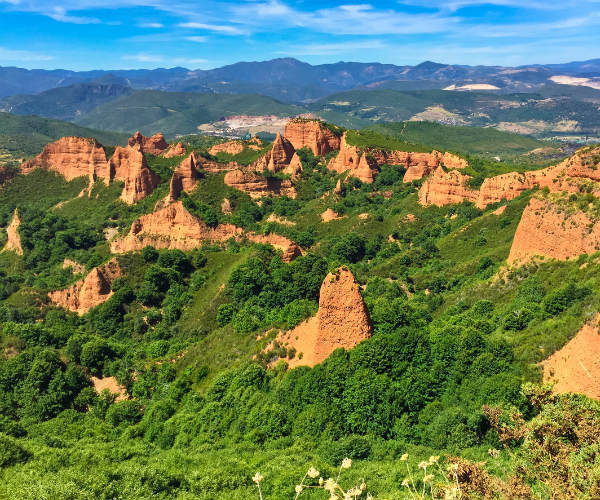 In fact, these are the results of searching for gold, by ingenious Roman engineers, who used state-of-the-art hydraulic mining. Vast amounts of water were used to literally destroy the mountains to expose the ore. The resulting devastation is today a wonderous sight, a place quite unique in Spain; a stunning place to hike and explore.
Teide National Park
Be amazed by one the world’s greatest volcanoes.
Do you know which is the highest Spanish peak? The truth is that its actually not on the Spanish peninsula; it’s the 3718 metre Mount Teide, on the Canary island of Tenerife. The Canary Islands are a sun-kissed Atlantic volcanic archipelago off north-western Africa and declared part of Spain since the early 19th century.
In fact, these are the results of searching for gold, by ingenious Roman engineers, who used state-of-the-art hydraulic mining. Vast amounts of water were used to literally destroy the mountains to expose the ore. The resulting devastation is today a wonderous sight, a place quite unique in Spain; a stunning place to hike and explore.
Teide National Park
Be amazed by one the world’s greatest volcanoes.
Do you know which is the highest Spanish peak? The truth is that its actually not on the Spanish peninsula; it’s the 3718 metre Mount Teide, on the Canary island of Tenerife. The Canary Islands are a sun-kissed Atlantic volcanic archipelago off north-western Africa and declared part of Spain since the early 19th century.
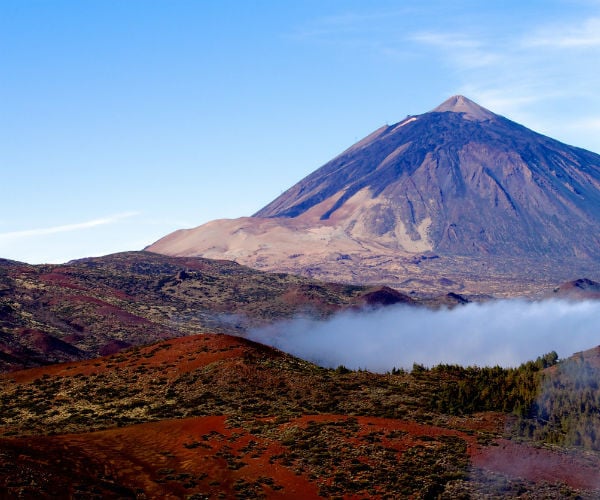 The seven main populated islands of the Canaries are now very much part of mainstream tourism, renowned for their ‘eternal spring’ climate, fabulous beaches and popular hotels. Tenerife is the largest and most populated island, yet also boasts spectacular areas of natural beauty and tranquillity. The Teide National Park is in the centre of the island, an area of lava flows, craters and Mount Teide. This is the highest point of all the Atlantic islands (and the highest peak on Spanish soil).
This, the oldest national park in Spain, is a delight and wonder to visit. Unusual flowers and plants flourish in the mineral rich soil, together with forests of pine and cedar. It’s a great area for hiking; or you can enjoy 4×4 tours; and even a cable car ride up to 3,555 metres!
Once you visited these 5 amazing UNESCO sites, it’s good to know you have at least another 43 in Spain to enjoy!
Paola Fiocchi Van den Brande is Director of Passepartout Homes Ltd. Passepartout Homes Ltd. offers an exclusive portfolio of luxury villa rentals in Italy, France, Greece, Croatia, Thailand and worldwide.
If you would like to be a guest blogger on A Luxury Travel Blog in order to raise your profile, please contact us.
The seven main populated islands of the Canaries are now very much part of mainstream tourism, renowned for their ‘eternal spring’ climate, fabulous beaches and popular hotels. Tenerife is the largest and most populated island, yet also boasts spectacular areas of natural beauty and tranquillity. The Teide National Park is in the centre of the island, an area of lava flows, craters and Mount Teide. This is the highest point of all the Atlantic islands (and the highest peak on Spanish soil).
This, the oldest national park in Spain, is a delight and wonder to visit. Unusual flowers and plants flourish in the mineral rich soil, together with forests of pine and cedar. It’s a great area for hiking; or you can enjoy 4×4 tours; and even a cable car ride up to 3,555 metres!
Once you visited these 5 amazing UNESCO sites, it’s good to know you have at least another 43 in Spain to enjoy!
Paola Fiocchi Van den Brande is Director of Passepartout Homes Ltd. Passepartout Homes Ltd. offers an exclusive portfolio of luxury villa rentals in Italy, France, Greece, Croatia, Thailand and worldwide.
If you would like to be a guest blogger on A Luxury Travel Blog in order to raise your profile, please contact us.Did you enjoy this article?
Receive similar content direct to your inbox.


Purely by accident I was in Cordoba one May for the Fiesta de lost Patios. I would imagine that the small courtyards and narrow winding lanes are attractive at anytime of the year. Coming up to the festival the courtyards with their tiling and ceramic wall planters were looking immaculate. Red geraniums are a favourite and some of the courtyards have fountains too. I think around 50 courtyards had entered the festival when I visited. Of course this is just one of the attractions in Granada and even if you can’t time your visit to coincide with the Fiesta there’s still plenty more to see.
Spain is one of my favourite countries in the world and I thought I knew it pretty well. Sadly, I’ve never been to a Guadalupe or nearby Caceres so it looks as if I’m going to have to go back one more time after reading this post.
If you are on Tenerife and the weather’s good it is well worth taking the cable car right to the top of Mount Teide. When the skies are clear you can get some fabulous views down the peak, across the park and out to sea. It’s so high that I even became a little lightheaded with the altitude.
I like the Costa Del Sol though sometimes it’s nice to take a break from the beaches. Heading into Antequera for a day of culture and a break from the heat would make for a break. Sometimes you need to take a holiday from your holiday.
It’s brilliant Spain is home to so many UNESCO World Heritage Sites, but you’d probably want a few weeks there to be able to visit as many as possible I’d imagine if they’re all spread out. I do love the idea of going to Antequera Dolmens to see the archeological site, it’s like a whole adventure of its own through history and mystery. The arches at Medina Azahara look beautiful. It’s fascinating how a city can be lost, then rediscovered as it was left. That’s definitely somewhere I’d like to visit too,
It is quite a tribute to Spain’s rich history that it has got at least 48 sites. All those centuries of invasions from North Africa have certainly contributed to its beautiful architecture. Also the influence of Moorish ornamental gardens has made the country a much more beautiful country.
But does anyone ever pause to think if any of today’s architectural creations will be recognised by UNESCO – or its successors in the future?
I just wish that I had read this post before my recent trip to Southern Spain. I spent a few days in Malaga where there’s been huge investment in creating an arty and buzzing city. Then I took a bus, for remarkably few Euros, through to Córdoba. I loved Córdoba but I just wished that I had known about Medina Azahara it looks an amazingly well-preserved place. Visiting that amazing site would have made for a perfect trip and I could easily have tacked on another day or two to my holiday.